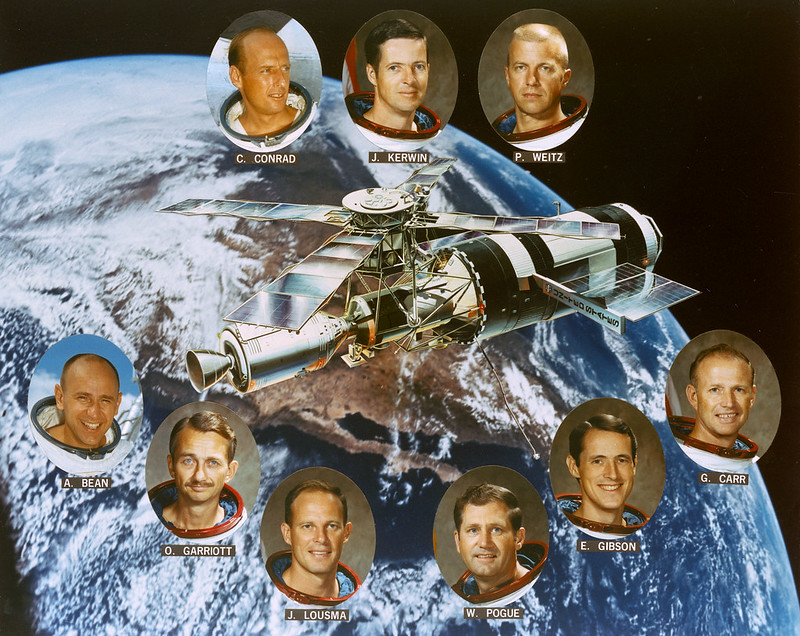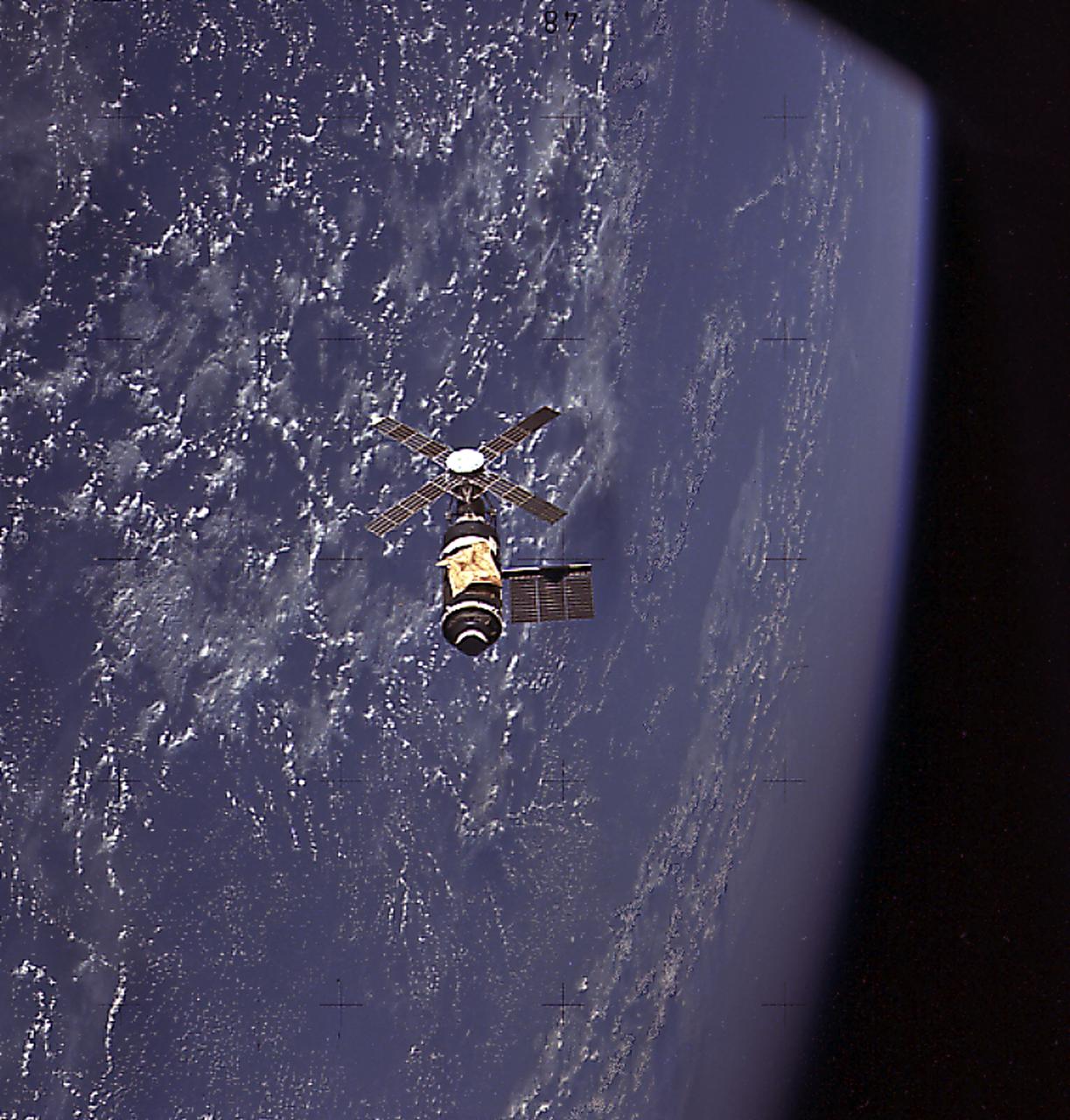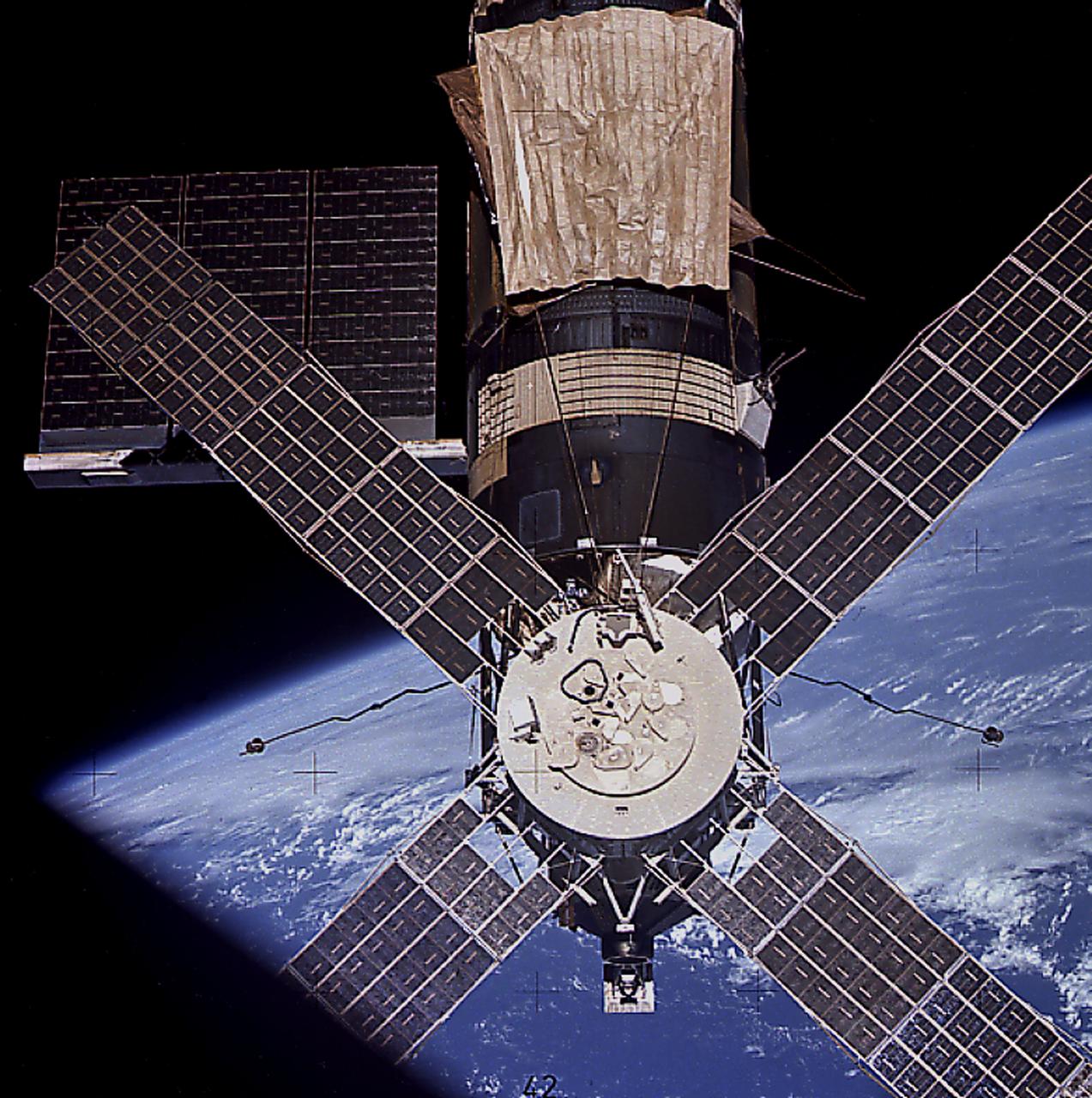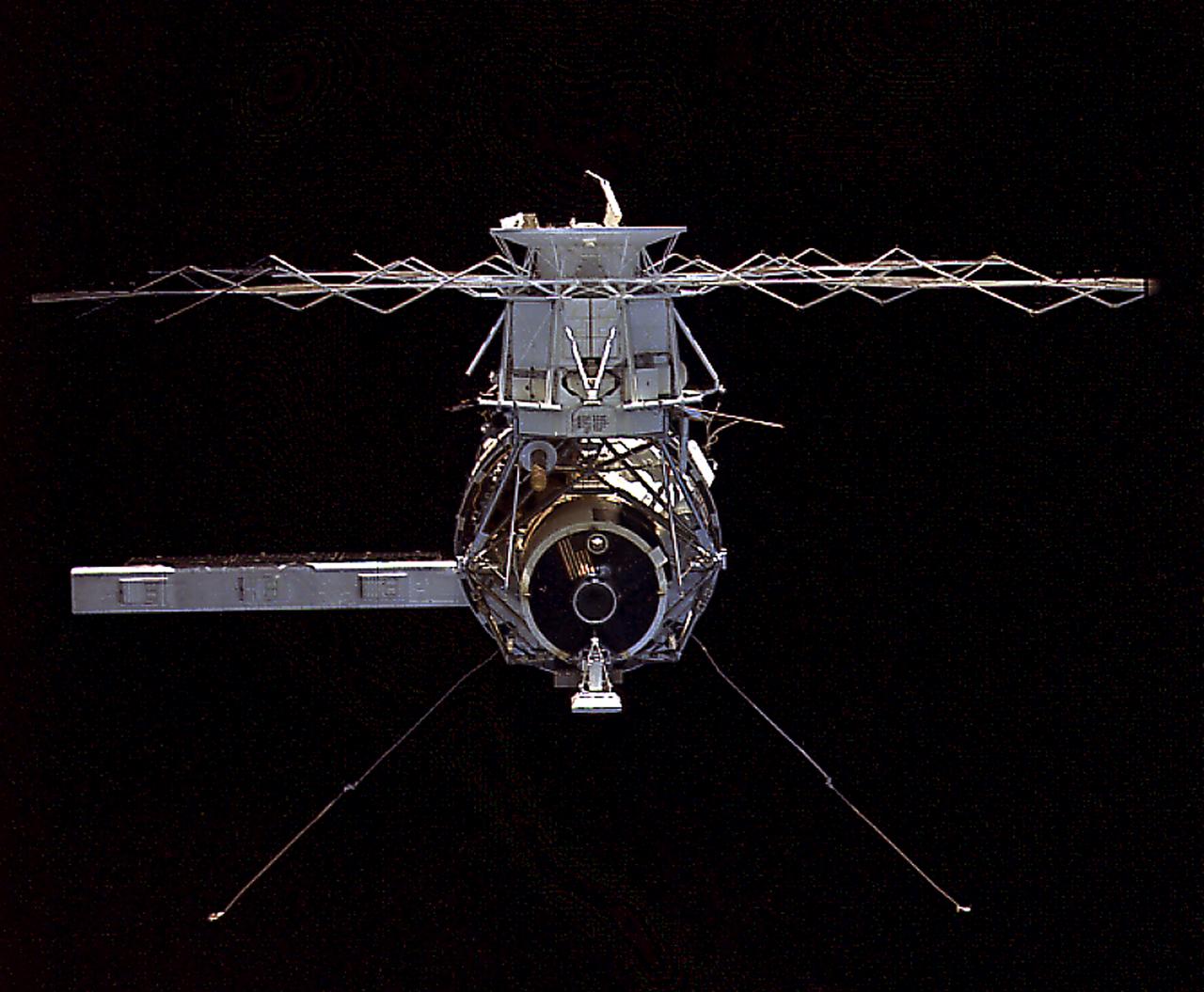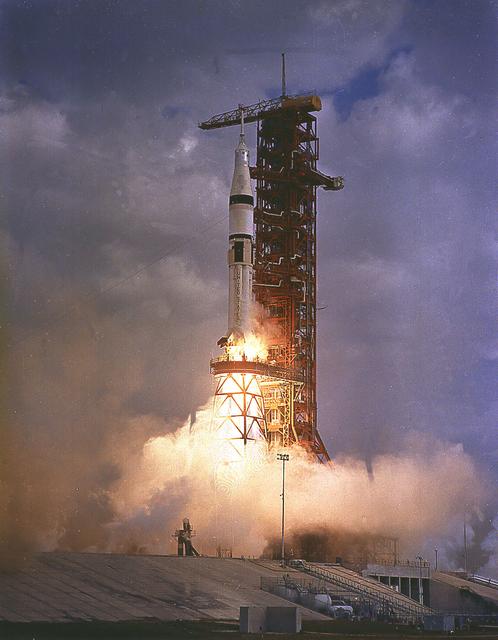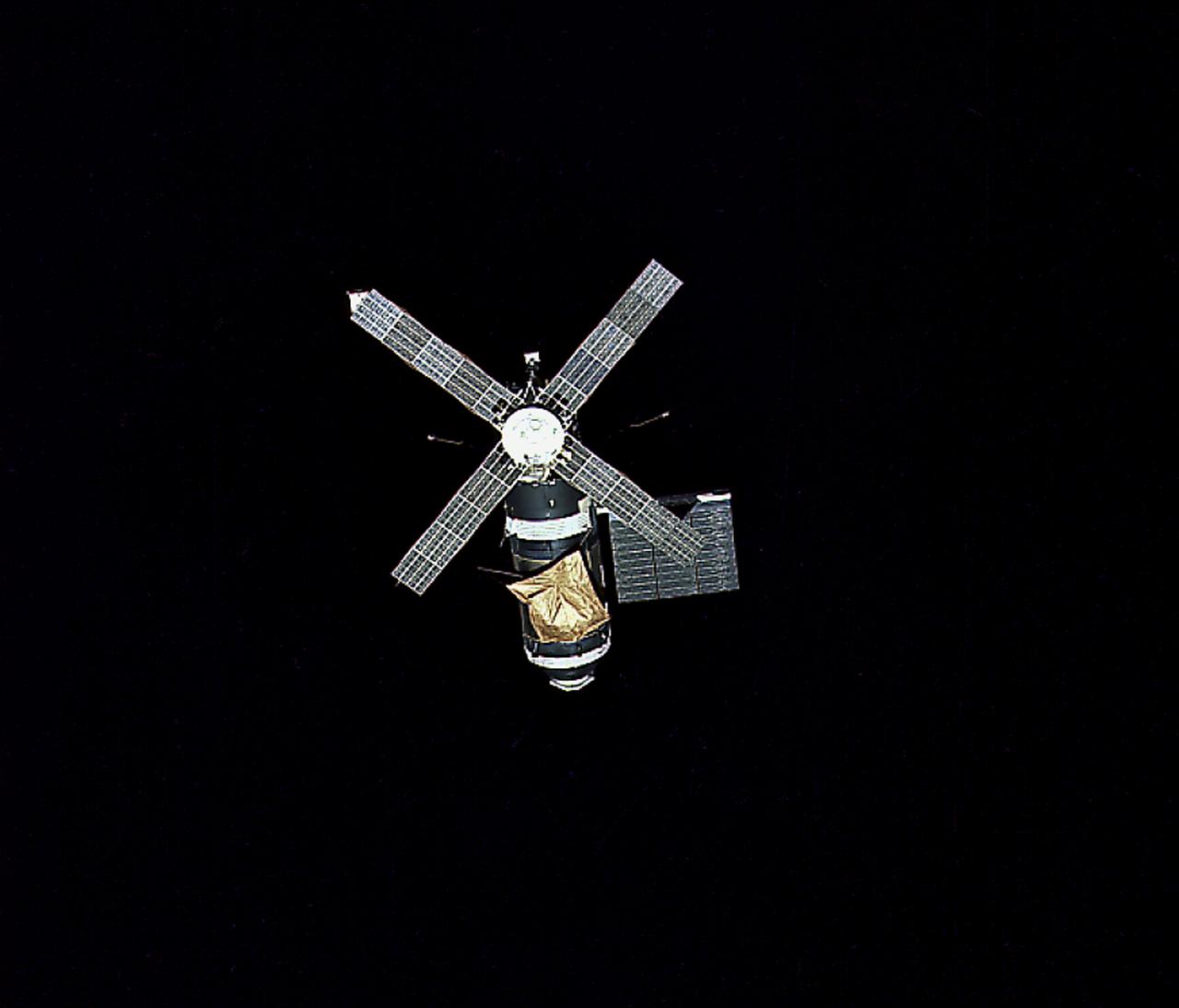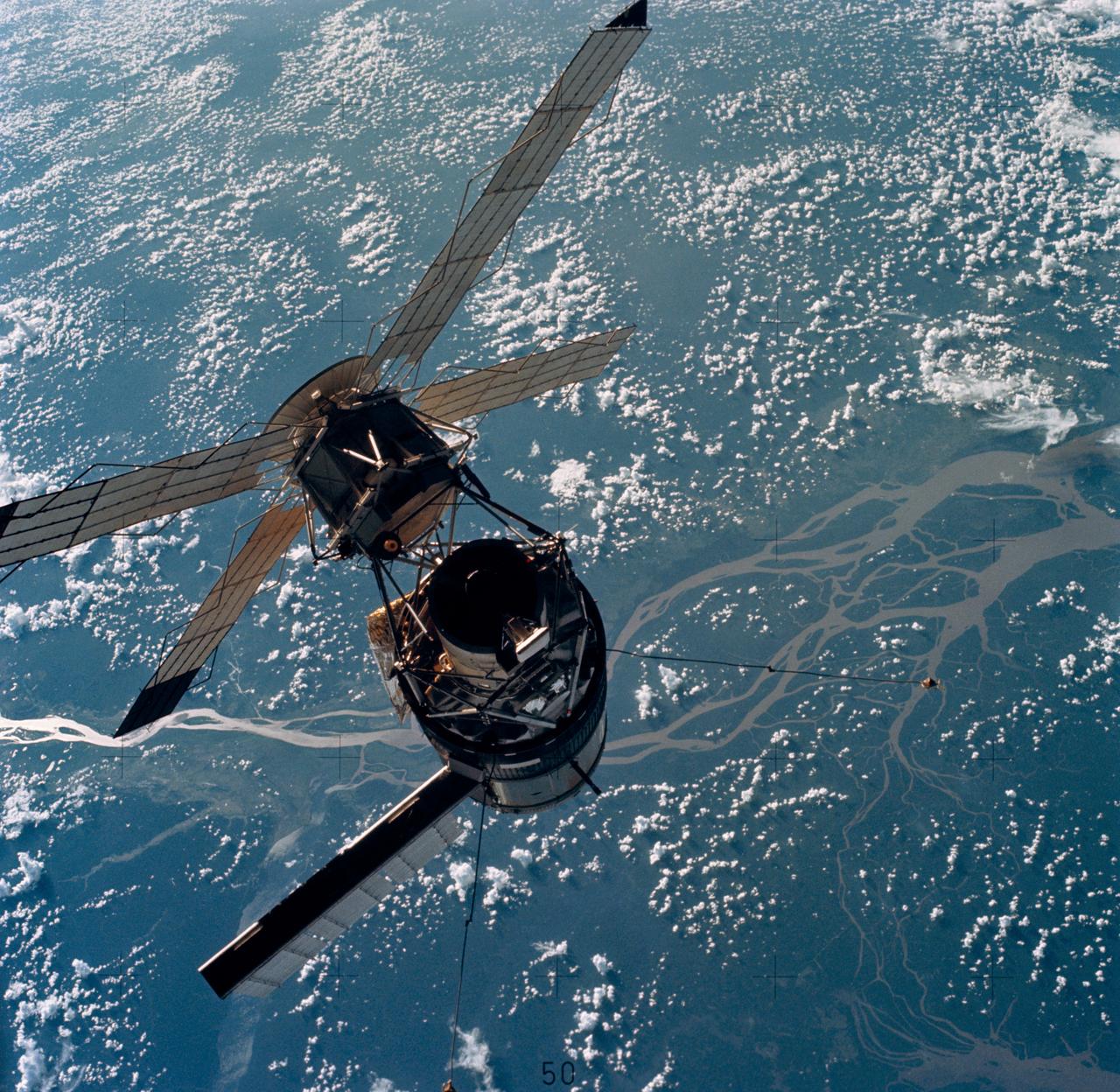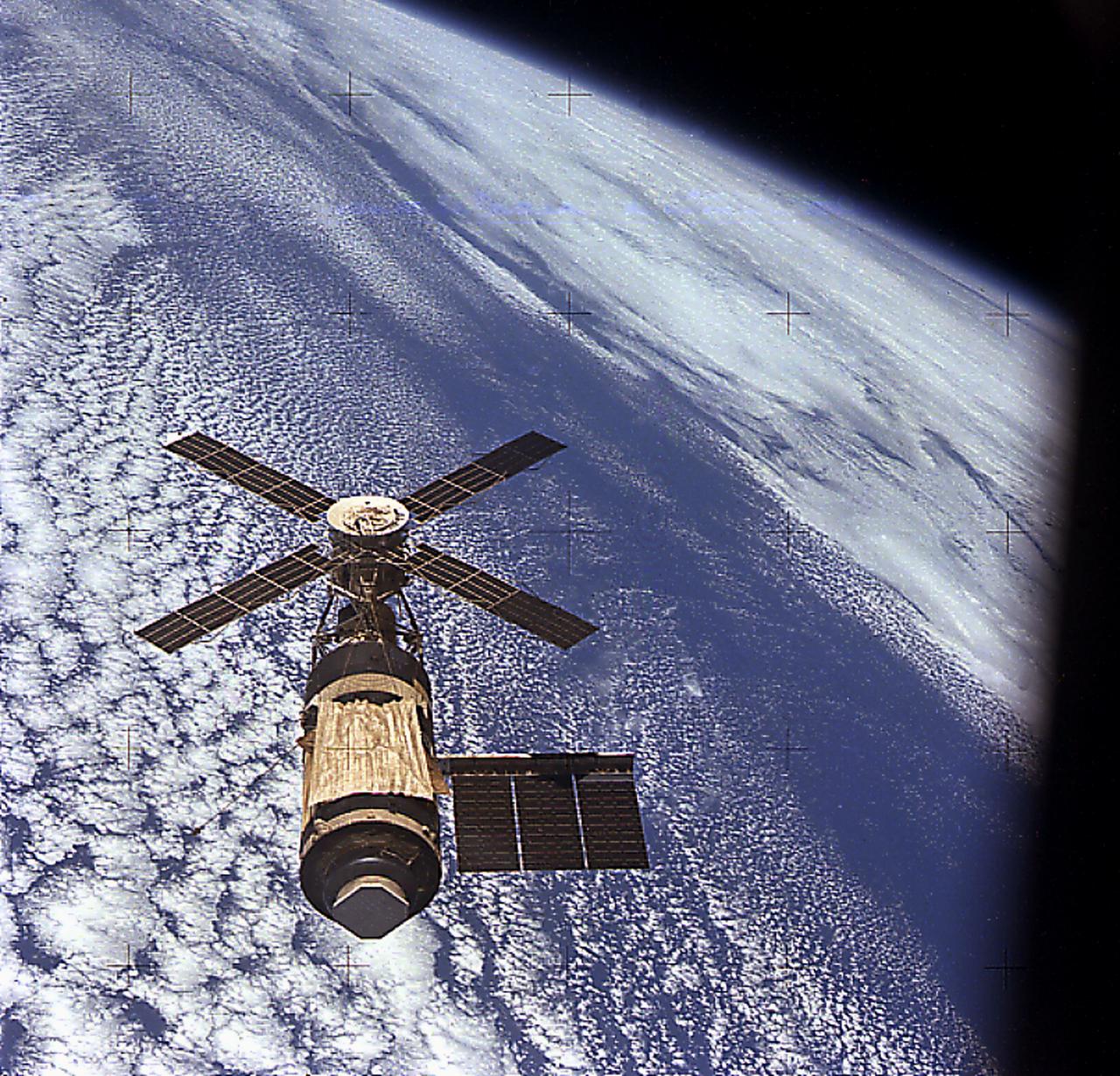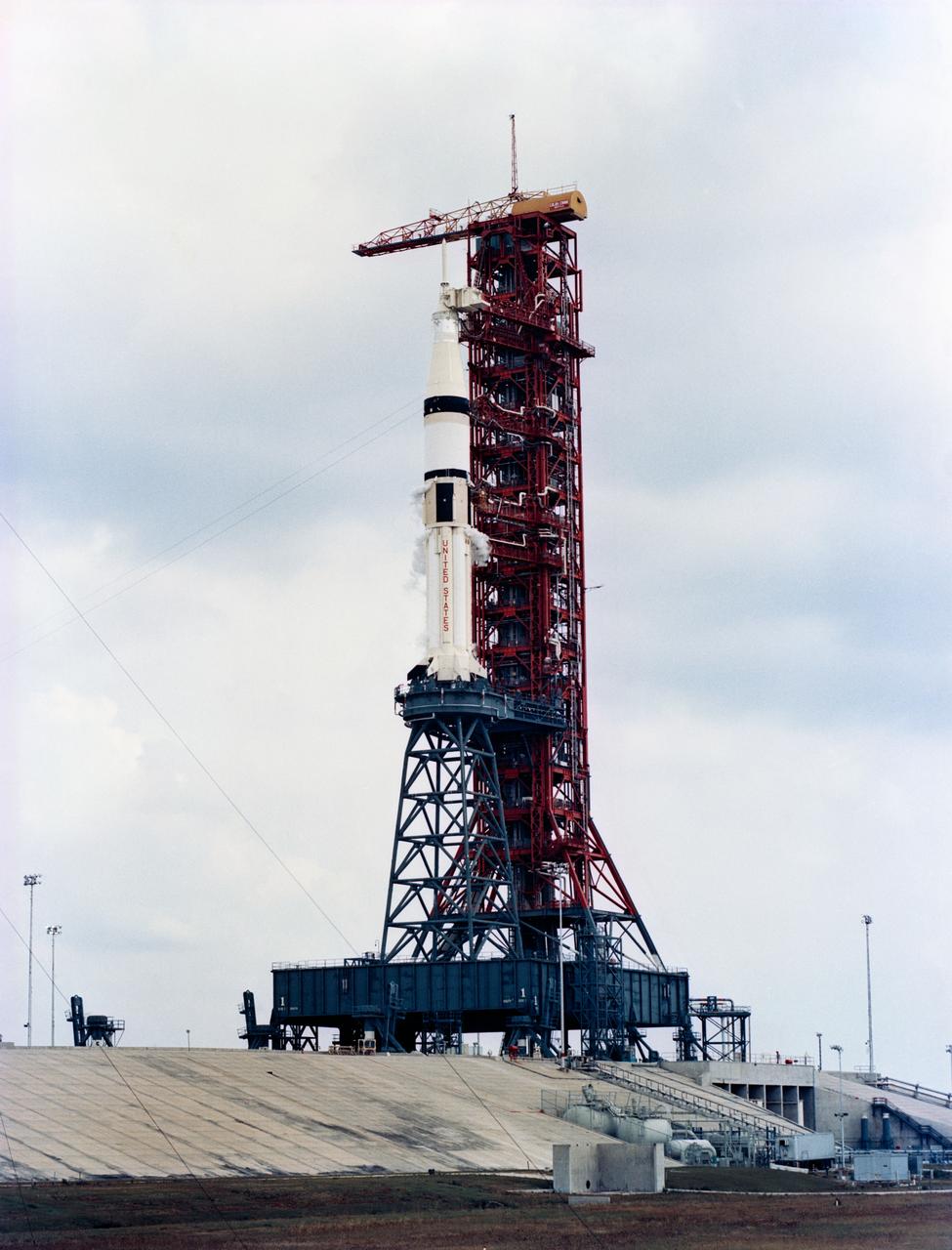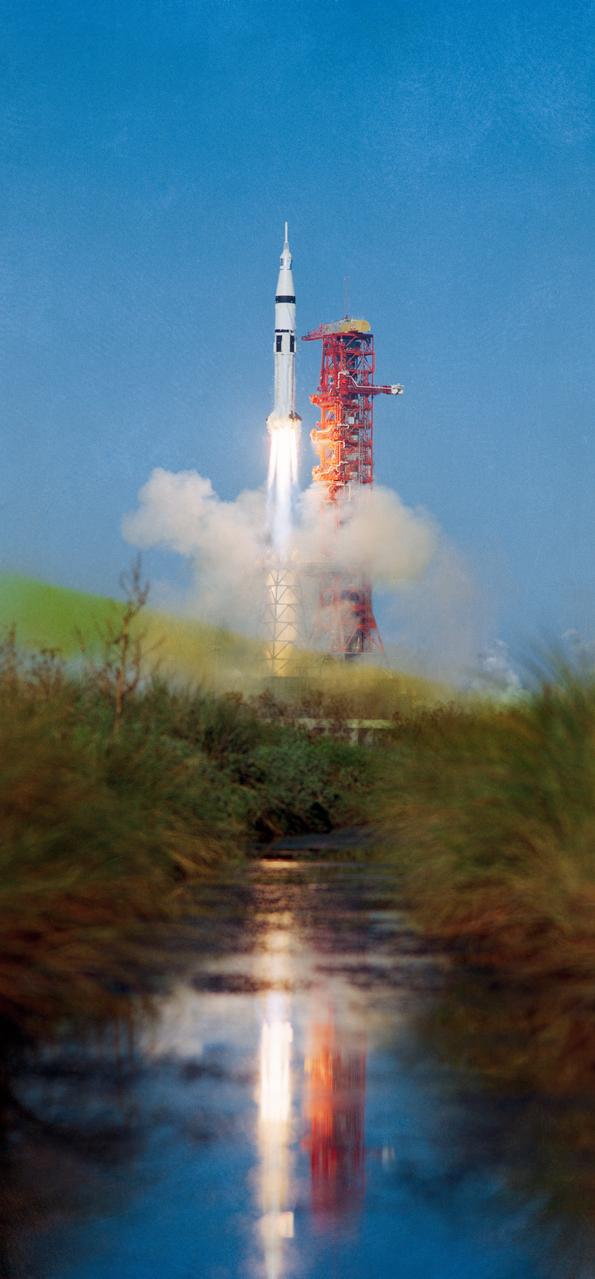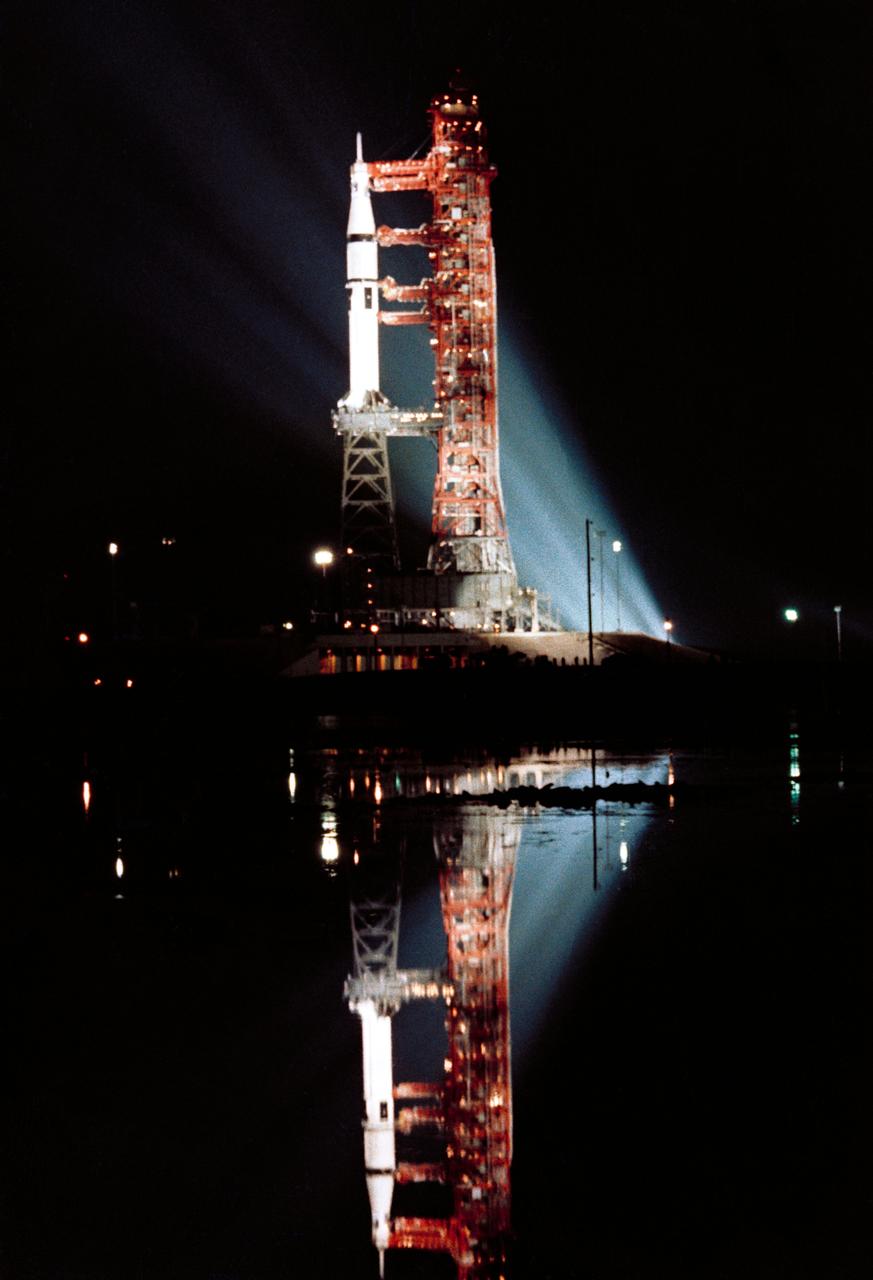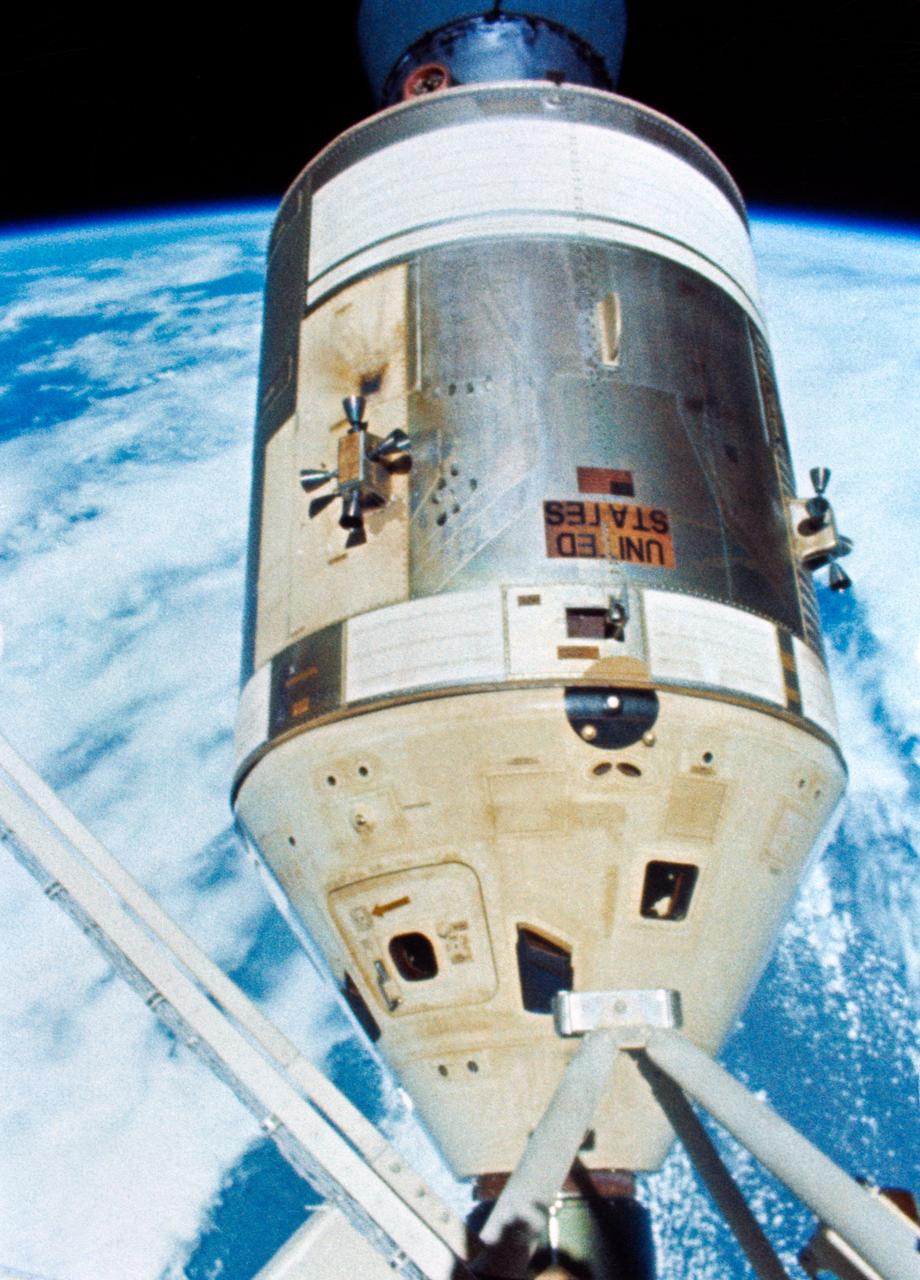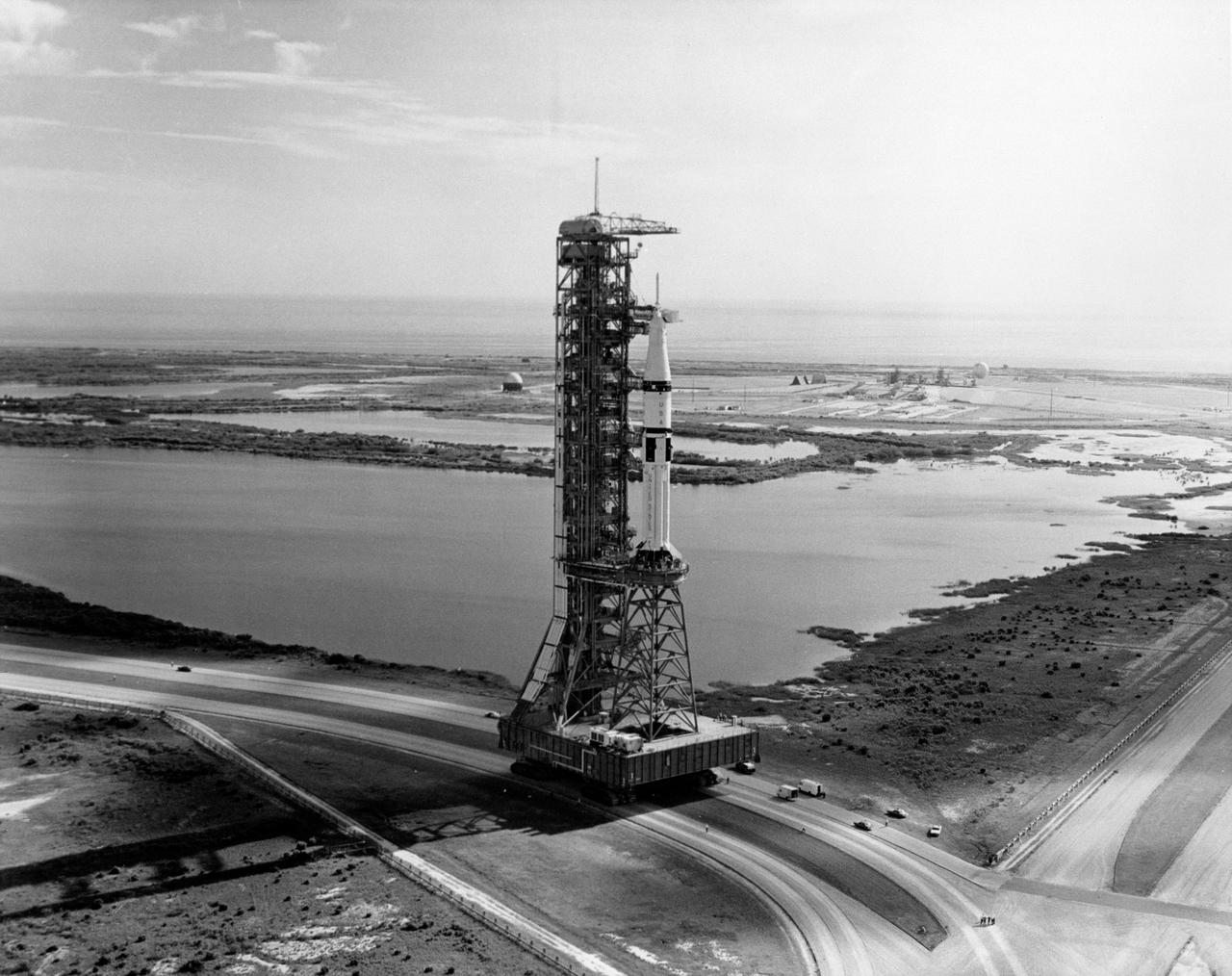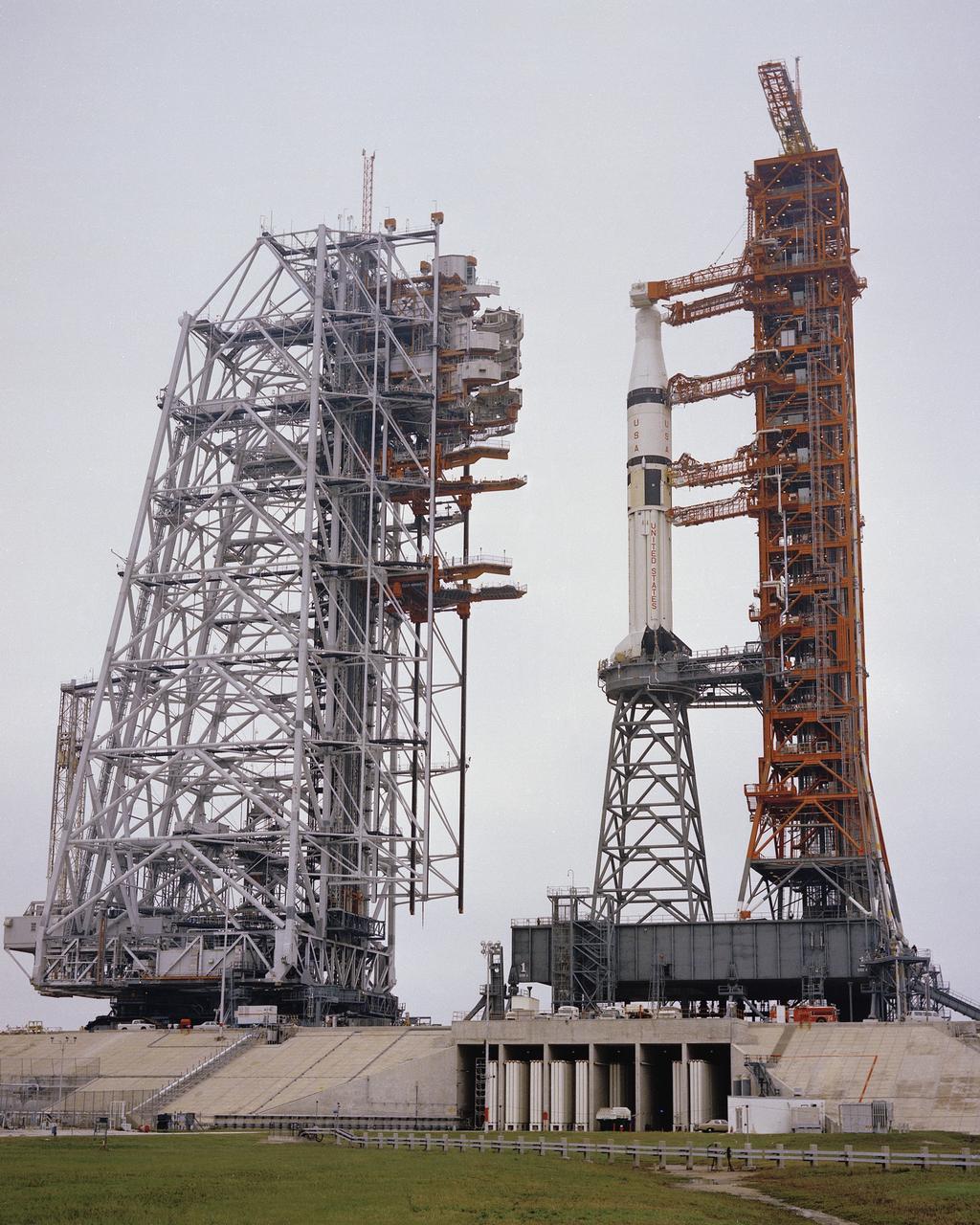Skylab 2 Fact Sheet
By Cliff Lethbridge

Skylab 2 (NASA Code: SL-2/AS-206/CSM-116)
Note: This mission is alternately referred to as Skylab I, since it was the first
manned Skylab mission. The official NASA designation was Skylab 2.
Launch Date: May 25, 1973
Launch Time: 9:00 a.m. EDT
Launch Site: Launch Complex 39, Launch Pad 39B
Launch Vehicle: Saturn IB AS-206
Command Service Module: CSM-116
Command Module Nickname: None
Crew:
Charles Conrad, Jr., Commander
Paul J. Weitz, Pilot
Joseph P. Kerwin, Science Pilot
Back-up Crew: Schweickart (C), Musgrave (P), McCandless (SP)
Mission Duration: 28 Days, 0 Hours, 49 Minutes, 49 Seconds
Number of Orbits: 404
Recovery Date: June 22, 1973
Recovery: U.S.S. Ticonderoga (Pacific Ocean)
Mission Summary:
Rendezvous of the Command Service Module (CSM) and Skylab Orbital Workshop (OWS) was accomplished on the fifth orbit.
Prior to a docking, a flyaround of the OWS provided visual confirmation that one of its two main solar array wings was missing and the second one was only partially deployed.
These anomalies were the result of a problem that the OWS encountered as it was launched during the unmanned Skylab 1 mission. A meteoroid shield was accidentally deployed during launch and was completely torn away.
As it departed the spacecraft, it tore off one of the main solar array wings and jammed the second one shut with debris. There was some speculation about the actual condition of the OWS until the very time it was actually approached by the Skylab 2 crew.
In addition, the OWS thermal shield was gone. Combined with the power reduction resulting from the solar array wing failures, and with only the OWS observatory’s solar array wings fully functioning, there was early concern about the crew’s ability to complete a stay aboard the spacecraft.
With the temperature inside the OWS approaching 125 degrees Fahrenheit, and no guarantee of clean, breathable air on board, the whole manned Skylab program was in jeopardy.
However, a manned presence in space very quickly became justified as the Skylab 2 crew began what had never been attempted before. They began the on-orbit repair of a damaged, malfunctioning spacecraft.
Initially, a “stand-up” spacewalk from the open Command Module (CM) hatch was conducted in an effort to clear the debris and free the jammed main solar array wing. Astronaut Weitz performed this spacewalk, which lasted 40 minutes.
With his body extending out the CM hatch and his legs grasped by astronaut Kerwin, Weitz attempted to pry the surviving solar array free with a 15-foot pole, first with a shepherd’s hook at the end which was later replaced by a universal prying tool. Attempts to free the solar array were unsuccessful.
Docking of the CSM to the OWS using the Multiple Docking Adapter (MDA) was then completed on the fifth attempt.
On Mission Day-2 (MD-2), after testing its atmosphere quality, the crew entered the OWS. A parasol thermal shield was immediately deployed through the airlock, and the temperature inside the OWS dropped to comfortable levels.
The crew still, however, had to adjust to a shortage of power. Mission objectives were revised accordingly, but the Skylab 2 mission continued unabated.
On MD-3, the crew began activating experiments. Experiment operations began on MD-5 and continued through MD-25.
On MD-14 (June 7, 1973) astronauts Conrad and Kerwin opened the Airlock Module hatch and ventured outside the spacecraft. This time, the astronauts succeeded in removing the debris and fully extending the jammed main solar array wing, restoring much of the electrical power to the OWS. This spacewalk lasted 3 hours, 25 minutes.
On MD-26 (June 19, 1973) astronauts Conrad and Kerwin performed a spacewalk which lasted 1 hour, 36 minutes. The astronauts retrieved and replaced film from solar telescopes, repaired a circuit breaker module and performed minor maintenance activities on experiment packages located outside the OWS.
On MD-28, the Skylab 2 crew boarded the CSM for a return trip to Earth, briefly establishing a manned space flight endurance record.
The crew experienced bone calcium loss and some physical deterioration during their stay in space.
Note: The previous manned space flight endurance record of 22 days was set by Soyuz 11 cosmonauts Dobrovolsky, Volkov and Patsayev aboard the Salyut 1 space station in June of 1971.
Salyut 1, the world’s first space station, was launched on April 19, 1971.
Tragically, all three Soyuz 11 cosmonauts were killed during re-entry as a valve in the descent engine opened, causing air to rush out of the Soyuz 11 spacecraft.
These were not the first in-flight casualties of the Soviet space program. Cosmonaut Vladimir Komarov was killed in April, 1967 when his Soyuz 1 spacecraft crash landed following a parachute system malfunction.
SELECTED NASA PHOTOS FROM THE SKYLAB PROGRAM
